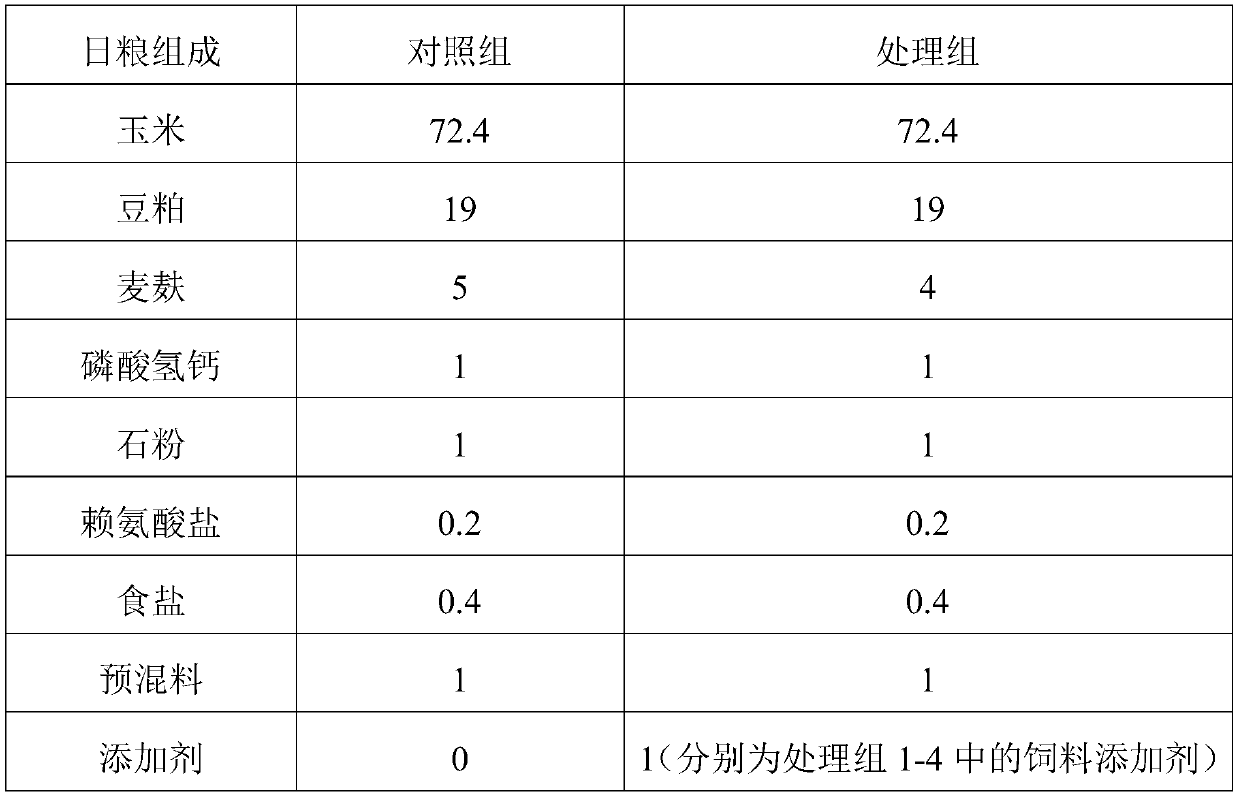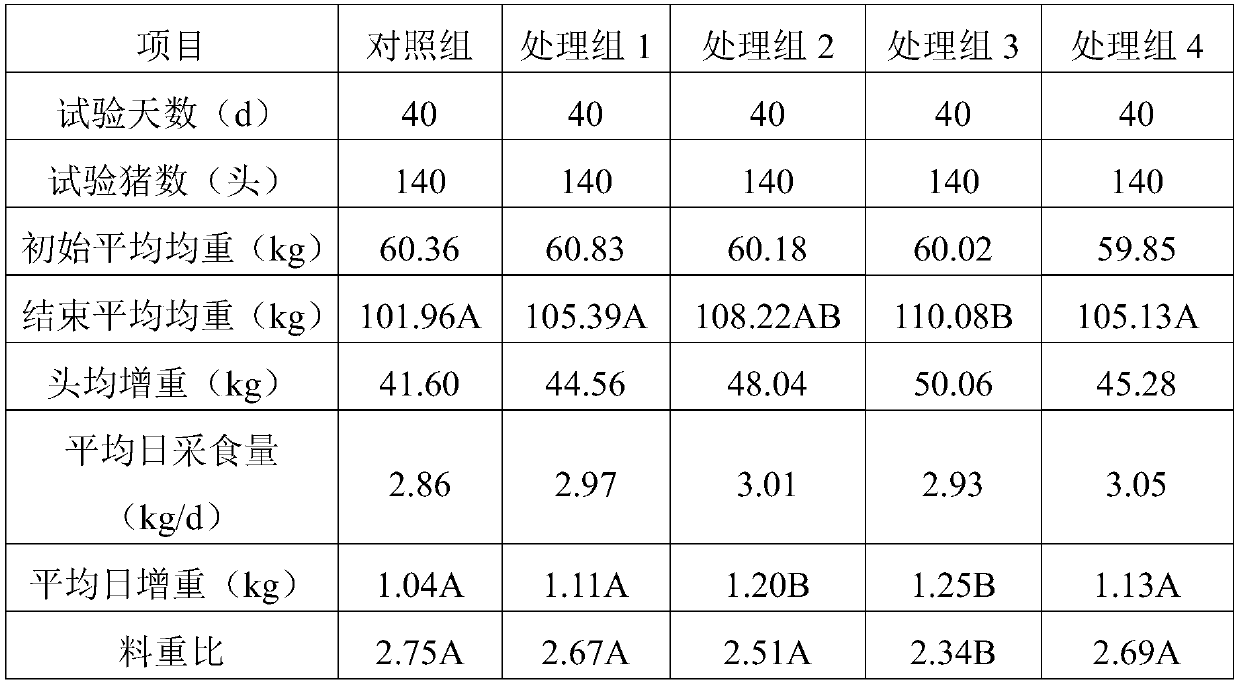Feed additive for reducing cholesterol content and preparation method and application of feed additive
A feed additive and cholesterol technology, applied in the field of fattening pig feed additives and its preparation, can solve problems such as drug residues, drug resistance in animals, and impact on human health, to reduce the absorption of selenium, promote the absorption of selenium, and reduce cholesterol content Effect
- Summary
- Abstract
- Description
- Claims
- Application Information
AI Technical Summary
Problems solved by technology
Method used
Image
Examples
Embodiment 1
[0028] In this experiment, a single factorial design was used. 700 Landrace pigs weighing about 60 kg were selected and randomly divided into 5 groups, each with 5 replicates, and 28 each replicate. The control group was fed a basal diet (see Table 1). The basal diet refers to the nutritional requirements of American NRC (2012) pigs. The experimental group was fed with a basal diet + different feed additive components (see Table 2). The test period was 40 Days, free access to food and water during the test period.
[0029] Table 1 Basic diet (wt%)
[0030]
[0031]
[0032] Table 2 Composition of additives in different treatment groups (unit: parts by weight)
[0033] Additive composition
Treatment group 1
Treatment group 2
Treatment group 3
Treatment group 4
Penta Acid Peptide
20
25
30
35
Jujube leaf extract
15
18
20
25
Smilax china leaf extract
10
12
15
10
5
5
5
5
Lactobacillus reuteri
25
20
15
15
[0034] At the beginning of the experiment, the fattening pigs were w...
Embodiment 2
[0046] A feed additive for reducing cholesterol content. The feed additive includes the following components and parts by weight: 20 parts of pentaacid peptides, 30 parts of jujube leaves, 10 parts of smilax leaves, 10 parts of yeast selenium, and 15 parts of Lactobacillus reuteri .
[0047] Among them, five acid peptides contain citric acid, lactic acid, acetic acid, propionic acid, butyric acid and small active peptides. Jujube leaves contain dihydromyricetin. Smilax china leaves contain flavonoids, tannins, alkaloids, amino acids, sugars and polyphenols. The effective live bacteria content of Lactobacillus reuteri≥1.0×10 9 CFU / g.
[0048] The preparation method of the feed additive includes the following steps:
[0049] 1) The leaves of Jujube and Smilax china are dried and pulverized, then Lactobacillus reuteri is added and the fermentation is carried out for 28 hours in a sealed container to obtain a fermentation product;
[0050] 2) Mix the fermentation product, penta-acid pe...
Embodiment 3
[0052] A feed additive for reducing cholesterol content. The feed additive includes the following components and parts by weight: 40 parts of pentaacid peptides, 15 parts of jujube leaves, 15 parts of smilax leaves, 5 parts of yeast selenium, and 25 parts of Lactobacillus reuteri .
[0053] Among them, five acid peptides contain citric acid, lactic acid, acetic acid, propionic acid, butyric acid and small active peptides. Jujube leaves contain dihydromyricetin. Smilax china leaves contain flavonoids, tannins, alkaloids, amino acids, sugars and polyphenols. The effective live bacteria content of Lactobacillus reuteri≥1.0×10 9 CFU / g.
[0054] The preparation method of the feed additive includes the following steps:
[0055] 1) The leaves of Jujube and Smilax china are dried and crushed, and then Lactobacillus reuteri is added and fermented in a sealed container for 20 hours to obtain a fermentation product;
[0056] 2) Mix the fermentation product, penta-acid peptide and yeast seleni...
PUM
 Login to View More
Login to View More Abstract
Description
Claims
Application Information
 Login to View More
Login to View More - R&D
- Intellectual Property
- Life Sciences
- Materials
- Tech Scout
- Unparalleled Data Quality
- Higher Quality Content
- 60% Fewer Hallucinations
Browse by: Latest US Patents, China's latest patents, Technical Efficacy Thesaurus, Application Domain, Technology Topic, Popular Technical Reports.
© 2025 PatSnap. All rights reserved.Legal|Privacy policy|Modern Slavery Act Transparency Statement|Sitemap|About US| Contact US: help@patsnap.com



